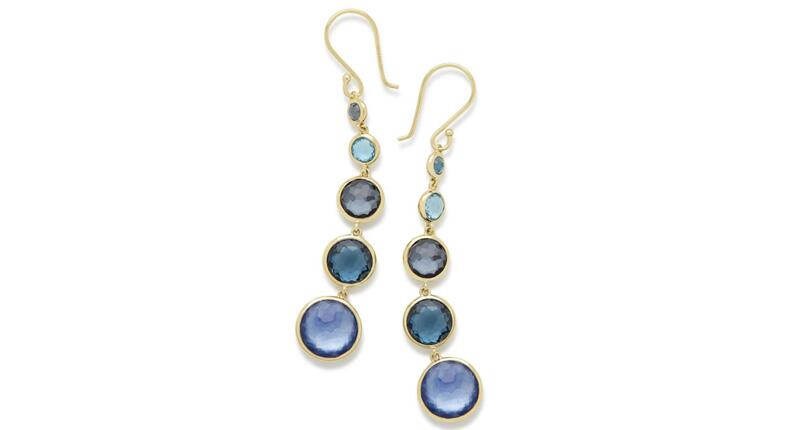The National Jeweler editors revisit the most noteworthy industry happenings and design trends from 2025.
Why Standard Chartered Shut Down Its Diamond Unit
The mid-stream sector of the diamond industry now “falls outside of the bank’s tightened risk tolerances,” the London-based lender said.
London--Standard Chartered Plc no longer will finance diamond traders and polishers after reevaluating its portfolio and determining there is too much risk for too little return in the sector.
The London-based bank began thoroughly reviewing all of its operations after CEO Bill Winters took over last year, looking to exit businesses generating low returns and/or that are vulnerable to large swings in loan impairment.
The trading and polishing sector of the diamond industry was certainly among those in Winters’ crosshairs, with the spike in defaults and bankruptcies last year--the bank was among those caught up in the massive Winsome Diamonds default--and the increased compliance reporting and regulatory capital costs associated with financing the industry.
In March, the London-based bank began to pull back, tightening its terms for lending to the diamond sector by asking dealers to provide more collateral or take out insurance protection on their loans.
Then, last week, JCKOnline.com broke the news that Standard Chartered would be exiting the diamond sector entirely.
In an official statement, the bank said that continuing to provide financing to diamond traders and polishers “falls outside of the bank’s tightened risk tolerances.”
A Standard Chartered spokesman added that it will still bank the mining and retail segments of the supply chain; its decision impacts only the mid-stream, meaning diamond traders and polishers.
A timeline for Standard’s shutdown of its diamond division has not yet been determined, though the bank said it is “working with clients to ensure a smooth exit.”
Eric Tunis, a partner at New York-based accounting and consulting firm Friedman LLP, said the news that Standard Chartered would no longer bank the diamond sector “wasn’t something that was shocking.”
There have been a number of warning signs, including the tightened lending restrictions and, very recently, the bank’s absence from the Las Vegas trade shows. Tunis said this is the first time he can recall not seeing anyone from Standard Chartered in Vegas.
He said the struggle with profitability among diamond manufacturers leading to loan defaults in the mid-stream, the slim margins banks now make when lending to diamond companies, and the general lack of robustness in the trade right now all make banks averse to financing it.
Friedman Co-Managing Partner Harriet Greenberg said compliance issues also are a factor.
Larger money center banks face hefty fines if it’s found that their clients are involved in money laundering, a practice many perceive to be rampant in the diamond industry.
“There’s a
“A lot of it is perception more than reality,” Greenberg said, noting that her firm’s clients, and many companies in the industry, have diligent quality control procedures in place.
The exit of Standard Chartered set off alarm bells around the industry, which has seen a number of banks pull back, and even pull out, in recent years.
Antwerp Diamond Bank is no more. Parent company KBC wound down its operations in 2014 after it is said it couldn’t find a buyer for the bank, though questions loom about the failed sale.
Dutch bank ABN Amro still lends to the mid-stream sector of the market, though sources in the diamond market say the bank has pulled back in recent years.
When asked to comment on Standard Chartered’s decision, Erik Jens, who heads the ABN Amro’s diamond and jewelry division, said he cannot comment on another bank’s strategy.
He noted, however, that in general banks “make risk adjusted return trade-offs on where to allocate capital. As for the diamond industry, we know that reputation and transparency still plays a role in those trade-offs, although we see the many initiatives of the industry to improve its image by self-regulation as well.
“In our opinion, for strong, corporate structured companies with a healthy balance sheet, a sustainable strategy and business plan and long-term potential and profitability, there is enough liquidity from several banks active in the sector, even attracting newcomers, including investors, in Europe, Asia, the U.S.A. and the Middle East.”
Greenberg said the exit of traditional lenders, like Standard Chartered and ADB before it, opens the door for non-bank players, such as hedge funds, to enter the sector and offer financial services.
“Anytime there’s a void, there’s an opportunity,” she said.
The Latest

Need a gift for the cat lover who has everything? Look no further than our latest Piece of the Week.

It purchased the “Grosse Pièce,” an ultra-complicated Audemars Piguet pocket watch from the ‘20s, for a record-breaking price at Sotheby’s.

How Jewelers of America’s 20 Under 40 are leading to ensure a brighter future for the jewelry industry.

The lab-grown diamond grower now offers custom engagement and fashion jewelry through its Kira Custom Lab Jewelry service.


Chandler got his start at Michelson Jewelers and has served as DCA president and CEO since 2001. He will retire at the end of the month.

The boutique is slated to open this week inside Terminal 8, offering pre-owned Rolex watches and more to international travelers.

Roseco’s 704-page catalog showcases new lab-grown diamonds, findings, tools & more—available in print or interactive digital editions.

Sponsored by Digital Monitoring Products

The special-edition egg pendant ingested in a New Zealand jewelry store was recovered after a six-day wait.

Associate Editor Natalie Francisco plays favorites with Piece of the Week, selecting a standout piece of jewelry from each month of 2025.

The “Love and Desire” campaign is inspired by the magic that follows when one’s heart leads the way, said the brand.

Two awardees will receive free tuition for an educational course at the Swiss lab, with flights and lodging included.

Berta de Pablos-Barbier will replace Alexander Lacik at the start of January, two months earlier than expected.

Sotheby’s held its first two jewelry sales at the Breuer building last week, and they totaled nearly $44 million.

Winners will receive free registration and lodging for its fourth annual event in Detroit.

Here are six ideas for making more engaging content for Instagram Reels and TikTok, courtesy of Duvall O’Steen and Jen Cullen Williams.

The honorees include a notable jewelry brand, an industry veteran, and an independent retailer.

Carlos Jose Hernandez and Joshua Zuazo were sentenced to life without the possibility of parole in the 2024 murder of Hussein “Sam” Murray.

Yood will serve alongside Eduard Stefanescu, the sustainability manager for C.Hafner, a precious metals refiner in Germany.

The New Orleans jeweler is also hosting pop-up jewelry boutiques in New York City and Dallas.

Set in a Tiffany & Co. necklace, it sold for $4.2 million, the highest price and price per carat paid for a Paraíba tourmaline at auction.

The jeweler’s “Deep Freeze” display showcases its iconic jewelry designs frozen in a vintage icebox.

Take luxury gifting to new heights this holiday season with the jeweler’s showstopping 12-carat sphene ring.

This year's theme is “Unveiling the Depths of the Ocean.”

In its annual report, Pinterest noted an increase in searches for brooches, heirloom jewelry, and ‘80s luxury.

Starting Jan. 1, customers can request the service for opal, peridot, and demantoid garnet.

























